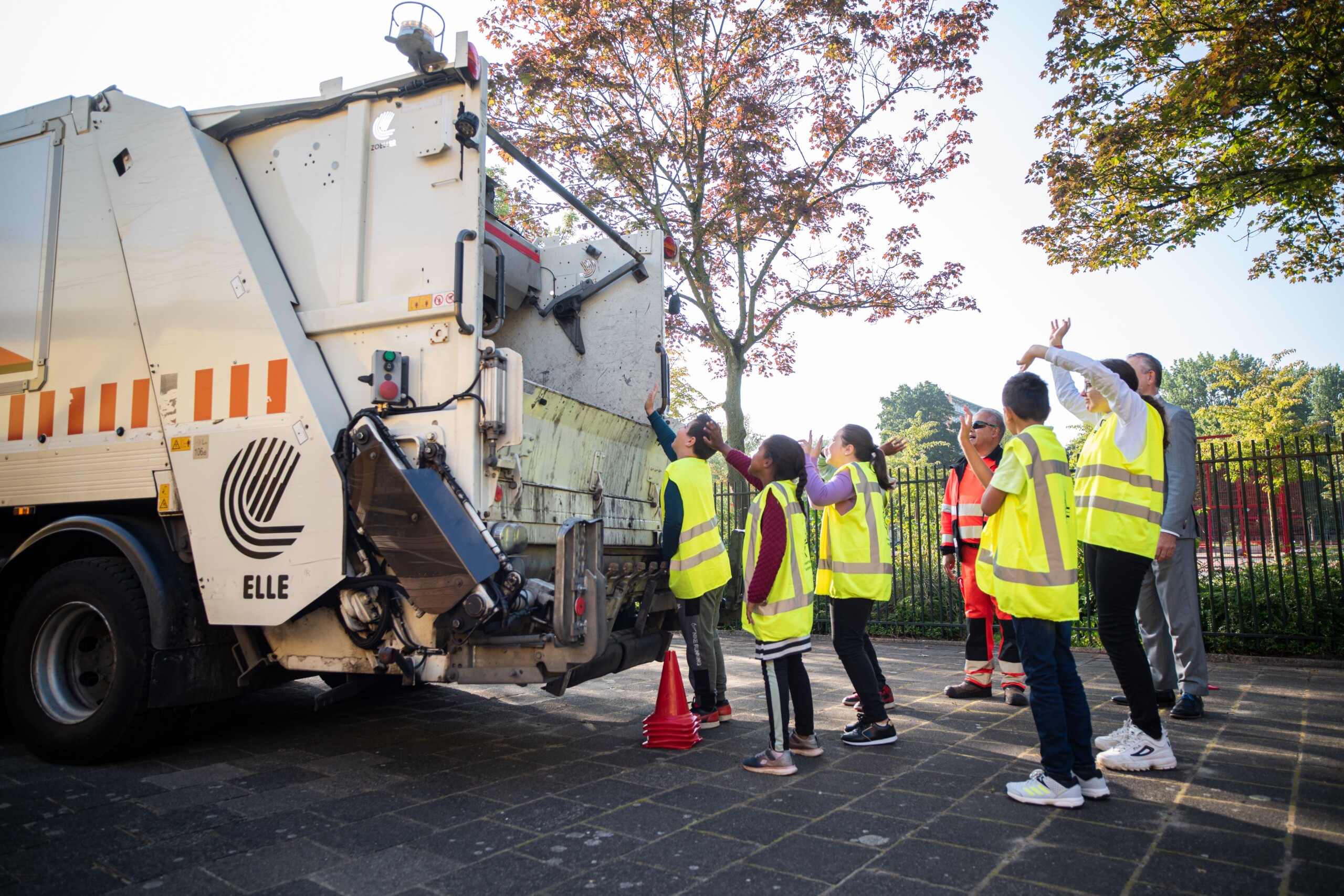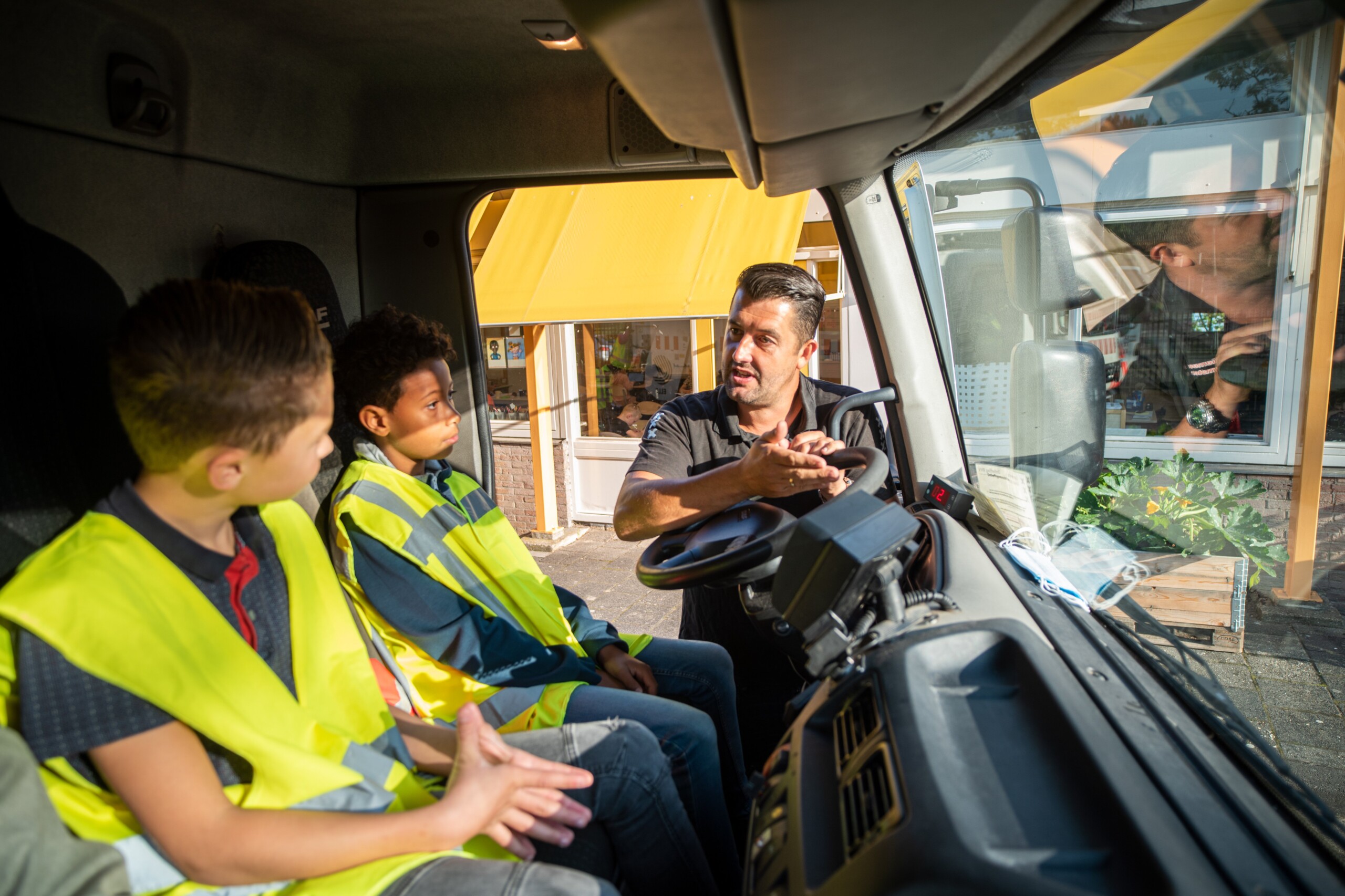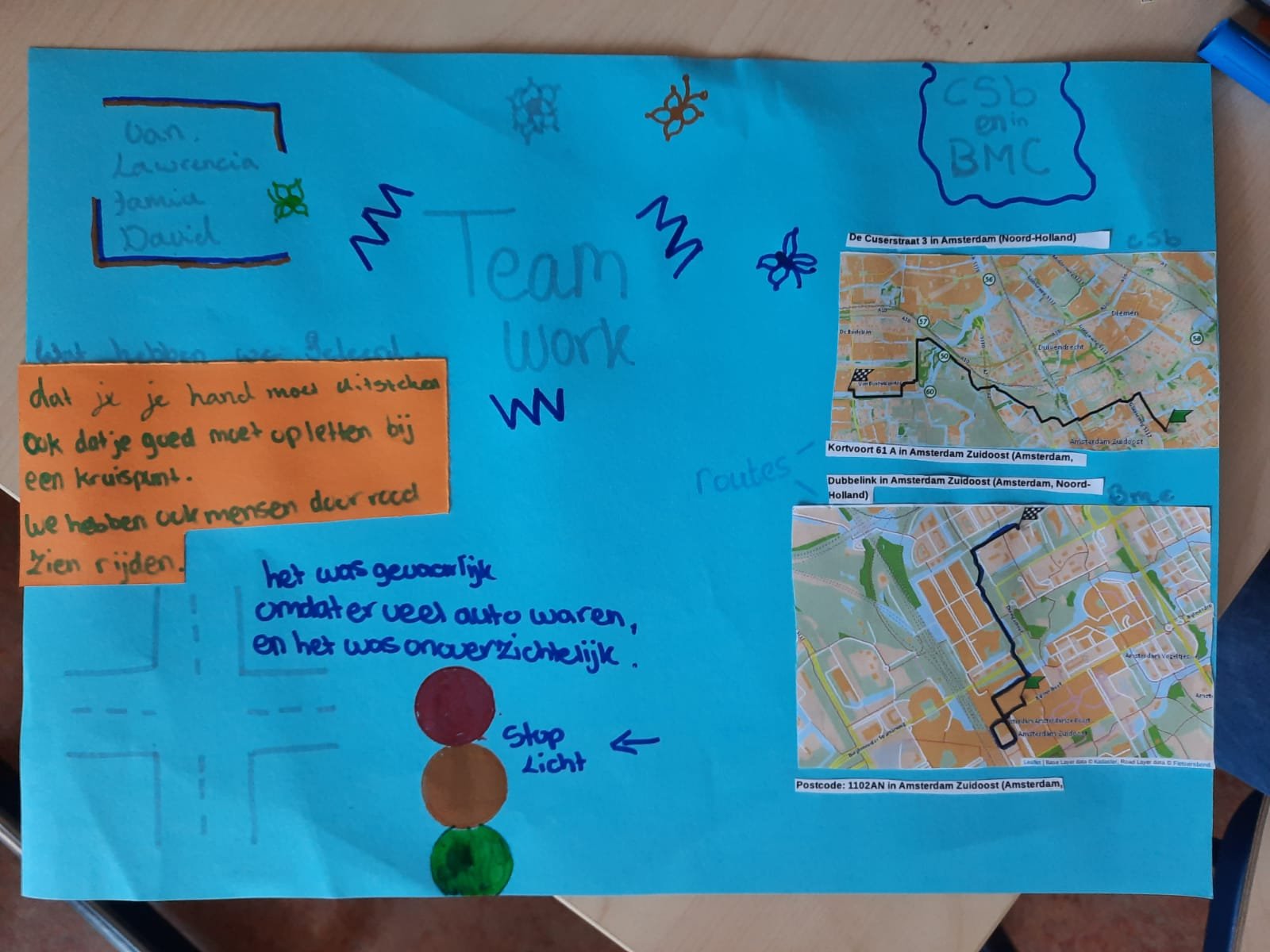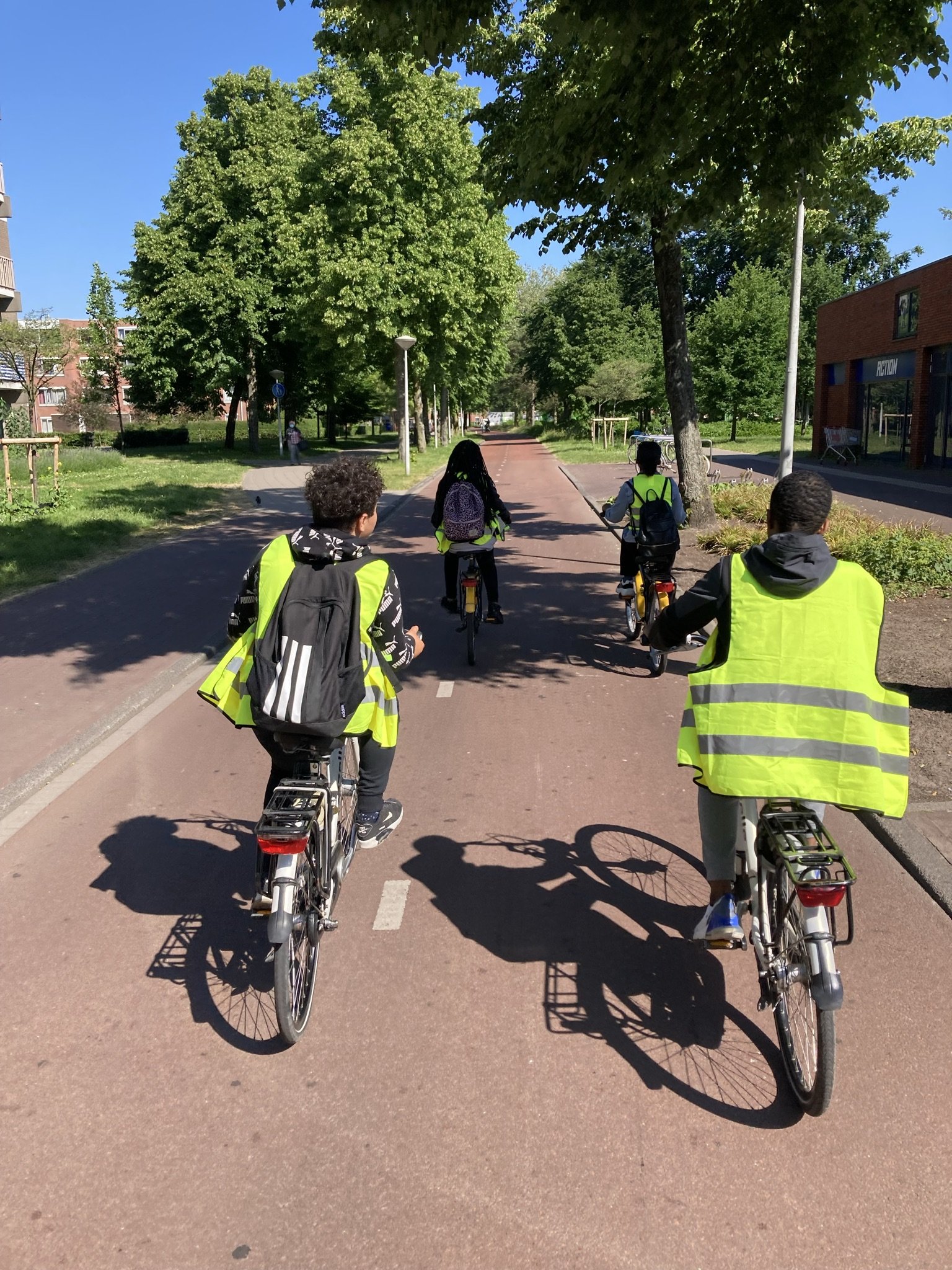Bob Kea talks about traffic education in primary schools in Amsterdam
Especially in a busy city like Amsterdam, learning how to cycle safely from a young age is important. But what is happening in the field of traffic education, particularly for bicycles? Bob Kea from ‘Verkeer en Meer’ explains the education program ‘On the road to high school’. And especially about the specific Amsterdam points of interest.
Bob works for Verkeersplein Amsterdam, which focuses on primary education. Quite a particular target group, as Amsterdam is, of course, a lively city with many events going on all the time. In each district, the use of bicycles and safety on the streets differ considerably. Verkeer & Meer is part of the Amsterdam Transport Region. This school year, a new collaboration started, says Bob. “Under the banner of Verkeer & Meer, we are collaborating with four organizations – Veilig Verkeer Nederland, Stichting Team Alert, DTV Consultants and Verkeersplein Amsterdam – to provide traffic education for 0- to 18-year-olds. With this working method, primary and secondary schools throughout the region are given traffic education in roughly the same way.”
Blindspot lessons
“An important part is the blind spot lessons. We are giving these lessons about forty times in Amsterdam this year. We cooperate with the Waste Collection Department of Zuid, which ensures that two drivers and their trucks participate in the lesson. The lesson starts with the theory: we show a film and ask questions. For example: ‘what is a safe place to stop your bicycle on the street? It is important that we consider what is safe for the students on the bicycle, but that we also consider the drivers’ perspective.”

| Children learn about the blind spot of a garbage truck. Photo: Fokke van Saane / Shootlab
“Afterwards, the drivers tell us, outside next to the truck, about their experiences on the road. This often leads to fascinating conversations. The experiences of the drivers really reach the children. This is perhaps the greatest learning experience of all. Students are also invited to take a seat in the cabin to experience what a driver sees, and more importantly, what he doesn’t see.”

| Children get a look from the driver’s perspective. Photo: Fokke van Saane / Shootlab
Practising bicycle route to the new school
“Another important part is to practice the bicycle route to the new high school. Quite often, students must cycle a longer distance, and the route is new to them. By practising this before the first day of school, a lot of tension can be taken away from them.” Bob visits the eighth graders and first asks them to draw the route to their new school on a map. A few weeks later, they cycle that route – with help from parents. In small groups, they cycle past several schools. “Not everyone goes to the same new school, so in this way, they can see where their friends will be going to school. An additional advantage is that they get to know the entire city better.”

| What the students think of their cycling route. Photo: Erwin Budding
Passing on the joy of cycling
“We also try to give them the joy of cycling. At first, students think that cycling 5 km is quite far, but they enjoy doing it once you practice together in a group. We also demonstrate that it is sometimes possible to cycle the first part of the route together before turning off to your own school. In this way, we inspire them and show them that cycling is not only healthy but also fun!”

| Children cycle their school route. Photo: Erwin Budding
Amsterdam-oriented lessons
“We have a website, Between School and Home, which is a traffic method specifically focused on the situation around schools. Children take pictures of situations in the neighbourhood, for example, of a group of cyclists near a major road. In this way, we show how a group of cyclists can, for example, cross the road safely. Schools can also use this information themselves. In this way, bottlenecks in each school zone can be identified and discussed. We also have the Amsterdam theoretical traffic exam. It includes situations specific to Amsterdam, such as a moving streetcar. Those cannot be found in the rest of our region. In fact, an entire site has been set up for that streetcar: Trammenland.nl – A digital teaching module about safe handling of the streetcar. It contains all kinds of traffic situations involving streetcars.”
Universal method
“For secondary education, Totally Traffic is used in South Holland, Brabant and Limburg. The method is a traffic education package that can be adapted to every school year and level. It may be structured slightly differently in each province, but it is still the same method. In Amsterdam and the Transport region, pedestrians and cyclists are number one in the Traffic & More program. We also want to ‘prepare’ the children for this. Meaning that we are now teaching children how to ride a bike and thereby encouraging cycling.”
Reflecting on solutions yourself
“The other day, I was teaching an 8th-grade class where we were tackling the question of how to increase the fun of cycling to school more often. We turned this into a sort of hackathon. In three sessions, we used design thinking to work on this issue. When children are busy with these kinds of questions, they think in free spirits. That’s fun, and after the ‘flying bikes’, they always find efficient solutions like donating 100 bicycles of different sizes to a school. That way, children can borrow a bike that fits their height every year. Or rewarding children for coming to school by bike on a monthly cycling day. Or create a website that links children together to enable them to cycle to school together. We also involve parents where possible. For example, each school has a parent for traffic that organizes activities such as a bicycle check (for lights). But we also initiate small bicycle repairs at school so that children with parents who may not be so handy can still take the bike.”
Tip for traffic education
“Most importantly, don’t make the subject too heavy. Make it fun, for example, by introducing a game element. That way, it is much more likely to stick. An app has been developed that allows children to experience traffic situations in a virtual world. Have students put on the VR goggles and walk through a street with different situations.”







